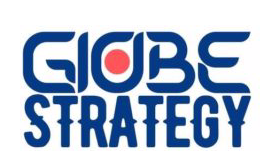Chamber International profiles the largest and fastest-growing markets in the world today with handy hints, tips and case studies advising you on the best approach.
Tag: export
The international trade position of Argentina. Towards a process of export diversification
This study analyses how far the strong expansion of Argentine exports since 2003 has been due simply to favourable external conditions and how industrial manufactures have behaved. It finds that the country’s pattern of international specialization has not greatly altered at the major category level, but that both primary products and manufactures of agricultural origin, which account for much of the trade surplus, have undergone significant changes in composition. In addition, regional trade has consolidated and traditional partners such as the European Union and the United States have been displaced to some extent by China. Industrial manufactures have continued to suffer from a strong comparative disadvantage, but certain high-technology industrial sectors, such as agricultural machinery and pumps and compressors, have started to become competitive, while seamless oil and gas tubing is already highly competitive>>ClickHere>>>
Heckscher-Ohlin Trade, Leontief Trade, and Factor Conversion Trade When Countries Have Different Technologies
This is another big challenge for international economics after Leontief paradox. This paper demonstrates that there are three trade types in international trade: the Heckscher-Ohlin trade, the Leontief trade, and the conversion trade, by using the 2 × 2 × 2 Trefler model. The conversion trade occurs when the model structure is with FIRs. The conversion trade is one that one country exports the commodity that uses its scarce factor intensively; another country exports the commodity that uses its abundant factor intensively. The conversion trade actually is the trade with factor content reversal2, i.e. that if one country exports the services of capital and imports the services of labor, another country does the same. This study demonstrates that both the Leontief trade and the conversion trade are rooted in the Heckscher-Ohlin theories. The three trade types are under the generalized trade pattern that each country exports the commodity that uses its effective (virtual) 3 abundant factor intensively and imports the commodity that uses its effective (virtual) scarce factor intensively <<ClickHere>>>
Fair Trade Coffee: The Mainstream Debate
This is a free case study offered by MIT. In 2008, the Fair Trade Coffee market was facing a growth crisis. Many in the industry believed that survival would require mainstreaming Fair Trade Coffee into nonspecialty brands like Folgers and Maxwell House. <ClickHere>
